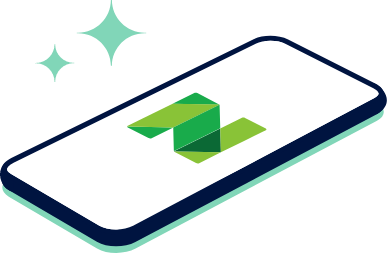7 Ways to Get Financial Help From the Government
There are government assistance programs for a wide range of expenses, including food, child care, utilities and education costs.

Many, or all, of the products featured on this page are from our advertising partners who compensate us when you take certain actions on our website or click to take an action on their website. However, this does not influence our evaluations. Our opinions are our own. Here is a list of our partners and here's how we make money.
There are federal and state programs for people who are struggling financially. These taxpayer-funded programs connect individuals and families with resources to help pay for expenses such as utilities, groceries, college tuition and even a down payment on a home.
Each program has its own set of qualifications, many of which are income-based. Having that information ready can make the application process go smoothly.
Which households are considered low income?
Many programs use the federal poverty line to determine who qualifies. This calculation, which is adjusted every year for inflation, is the government’s way of determining which individuals and households are “low income” and, as a result, are eligible for various assistance programs.
For a single-person household in 2025, the definition of low income using the federal poverty level is $15,650 annually. Each additional person in the household adds to the total. For example, the poverty guideline is $32,150 per year for a family of four .
1. Get help with utility bills and internet
Need help covering the costs of energy, phone service and internet? These programs may be able to help:
- The Low Income Home Energy Assistance Program helps low-income households cover heating and cooling costs. Grants are issued by the states, which receive funding from the Department of Health and Human Services. Each state sets its own eligibility requirements, including income levels .
- The Lifeline program offers a discount of up to $9.25 per month on the cost of a home phone or internet service. You must meet certain eligibility requirements, unless you already participate in a federal assistance program, such as Medicaid, or receive federal public housing assistance or FEMA disaster assistance, in which case you are automatically eligible .
» Learn how to apply for affordable home internet
Stress less. Track more.
See the full picture: savings, debt, investments and more. Smarter money moves start in our app.
2. Cut food costs
Many people are feeling the impact of rising grocery costs in their budgets, but there are programs that can help:
- The Supplemental Nutrition Assistance Program, or SNAP, is for families who meet income requirements in their state. If approved, families receive benefits each month on an Electronic Benefits Transfer (EBT) card, which works like a debit card that can be used in authorized stores .
- The National School Lunch Program is typically offered for children who attend public or non-profit private schools. Federal funding is given to state agencies who are responsible for administering the money. Low-income students are eligible, but their parents or caregivers must submit an application with the school or district .
3. Offset child care expenses
Child care is one of the biggest budget breakers for many families. Annual costs for infant care range from just shy of $5,000 in Mississippi to more than $22,600 in Washington, D.C., according to the Economic Policy Institute, a nonprofit organization focused on low- and middle-income workers .
The Child Care and Development Fund may be able to help ease the burden for low-income families. Administered by the U.S. Department of Health and Human Services, the fund gives states, territories and tribes money to distribute to families to help pay for child care if the primary caregiver is working, pursuing work-related training or going to school. Grants are income-based and typically cover care for children under 13. Contact the Child Care and Development Fund administrator for your state .
4. Recover unclaimed money
Unclaimed money isn’t so much free as it is money owed to you. About 1 in 7 Americans have unclaimed money, according to the National Association of Unclaimed Property Administrators . What exactly counts as unclaimed money? It could be a long-forgotten deposit paid to a utility company, a lost savings bond, unclaimed life insurance benefits, a lost pension or an uncashed paycheck.
These unclaimed funds are turned over to the state when the owner can’t be located, often due to a clerical error or companies having an old address on file. Visit unclaimed.org, a site affiliated with the National Association of State Treasurers, to find out if you have money waiting to be claimed. There is also usa.gov/unclaimed-money, which lists different ways to help you find unclaimed money from the government.
5. Get down payment or rent assistance for a home
The Emergency Rental Assistance Program assists households in staying current on their rent and other housing-related expenses. The Department of Housing and Urban Development also provides subsidized rental housing for low-income tenants. Eligibility for subsidized housing varies based on city or county requirements.
If you want to buy a home but can’t afford a down payment, look into state-based down payment assistance. These grants and loans help you cover the upfront costs of purchasing a home.
In Nevada, for example, first-time homebuyers who qualify can get up to 4% of the total loan amount to put toward a down payment and closing costs .
Help isn’t reserved for low-income borrowers, but states do set qualifications related to income, credit scores and more.
» Read our guide to down payment assistance
Stress less. Track more.
See the full picture: savings, debt, investments and more. Smarter money moves start in our app.
6. Find affordable health insurance
Health insurance costs can be financially devastating, especially when they are unexpected.
Individuals and families who buy medical coverage through the government's health insurance marketplace (HealthCare.gov) may qualify for a credit toward their insurance premiums. If you are eligible for the premium tax credit, you can choose between receiving it as a tax credit when you file your tax return, or it can be paid directly to your insurance provider, lowering your monthly payments.
Eligible children can get health coverage through the Children’s Health Insurance Program (CHIP). Generally, CHIP covers children who live in households with income too high to qualify for Medicaid but can’t afford traditional coverage.
While exact CHIP coverage varies by state, it typically covers routine checkups, immunizations, prescriptions, hospital care and emergency visits .
» Read our guide to choosing health insurance
7. Apply for college grants
College grants, like the federal Pell grant, can make it easier to pay for college. Students who are eligible for the Pell Grant could get up to $7,395 for the 2025-26 award year . This money does not need to be repaid if you meet required conditions, such as maintaining your enrollment status.
The exact amount awarded is based on factors that include financial need, the cost of attendance and enrollment status. Students can apply for the Pell grant by completing the Free Application for Federal Student Aid, or FAFSA. The application is also used to qualify for many state and institutional grants and scholarships.
» Learn more with our FAFSA guide
Other federal grants for college include:
- The Federal Supplemental Educational Opportunity grant. This grant is given to undergraduate students by their college or university, based on data from the FAFSA. Like the Pell grant, it does not need to be repaid unless certain eligibility requirements are broken (i.e., withdrawal, change in enrollment status from full-time to part-time, etc.). Students can receive up to $4,000 per year, depending on financial needs and other factors.
- The Teacher Education Assistance for College and Higher Education grant. Recipients must agree to a teaching service obligation and meet certain academic requirements .
» Learn more sites to search for scholarships
Watch out for "free money" scams
While there are ways to get financial assistance from the government, there are also grant scams that claim to give you free money from the government in hopes of stealing from you. These scams come in the form of texts, emails, social media and even phony websites. Watch out for domain names that seem strange, suspicious sender addresses or misspellings in messages.
Keep in mind that the government rarely reaches out to people with offers of free money, especially for starting a new business or covering personal expenses. If approached by one of these scammers, don’t pay them or share your personal information.
Additional resources if you need money
Finding financial resources when you need them most can be stressful. If you’re looking to keep more money in your wallet, start here:
- Looking for a way to lower your bills? Consider applying for an income-driven student loan repayment plan, consolidating credit card debt or increasing your deductible to lower your monthly payment.
- Revamp your budget to live below your means by automating your savings, lowering discretionary expenses, consolidating your debt and changing your shopping habits.
- Get free stuff by using online community marketplaces, enrolling in loyalty programs and taking advantage of local resources, like the library, to get discounts on events and entertainment.
- Pick up extra income. See our guide on how to make money for a range of realistic side hustle ideas.
- Pick one or two areas of your life to focus intensely on cost-cutting rather than every aspect, which can feel overwhelming. For example, save money on groceries by using what’s already in your pantry, sticking to your shopping list, using store coupons and deals and trying generic brands.
Article sources
NerdWallet writers are subject matter authorities who use primary,
trustworthy sources to inform their work, including peer-reviewed
studies, government websites, academic research and interviews with
industry experts. All content is fact-checked for accuracy, timeliness
and relevance. You can learn more about NerdWallet's high
standards for journalism by reading our
editorial guidelines.
- 1. Office of Community Services. Low Income Home Energy Assistance Program (LIHEAP). Accessed Nov 3, 2025.
- 2. Lifeline. Get Connected to Phone or Internet Service. Accessed Nov 3, 2025.
- 3. Food and Nutrition Service. SNAP Eligibility. Accessed Nov 3, 2025.
- 4. Department of Agriculture. National School Lunch Program. Accessed Nov 3, 2025.
- 5. Economic Policy Institute. The cost of child care in the United States. Accessed Nov 3, 2025.
- 6. Office of Child Care. FY 2025-2027 State/Territory CCDF Plans. Accessed Nov 3, 2025.
- 7. National Association of Unclaimed Property Administrators. What is unclaimed property?. Accessed Nov 3, 2025.
- 8. Nevada Housing Division. Home is Possible for First-Time Homebuyers. Accessed Nov 3, 2025.
- 9. HealthCare.gov. The Children's Health Insurance Program (CHIP). Accessed Nov 3, 2025.
- 10. Federal Student Aid, U.S. Department of Education. Federal Pell Grants. Accessed Nov 3, 2025.
- 11. U.S. Department of Education. Federal Grants for College or Career/Trade School. Accessed Nov 3, 2025.
- 12. Assistant Secretary for Planning and Evaluation. Poverty Guidelines. Accessed Nov 3, 2025.
Related articles









